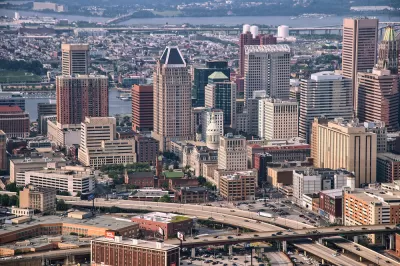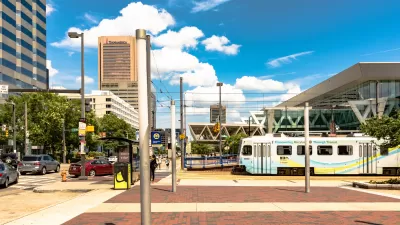The region’s long-range transportation plan fails to boost investment in transit, opting to fund road expansions instead.

In a commentary published in The Baltimore Sun, Samuel Jordan, Eric Norton, and Michael Scepaniak excoriate Baltimore’s new regional transportation plan, known as Resilience 2050, which the authors argue “represents the same business-as-usual, automobile-centric approach Maryland has largely been taking for the past 70 years.”
According to the article, “the plan calls for almost $7 billion, the majority of system expansion spending, to go toward expanding roads and highways.” And while the plan includes almost $5 billion for new transit projects, “any progress on transit expansion would be swamped by the additional miles of new road lanes.”
As the authors point out, “History has proved that trying to build our way out of congestion with more lane miles is a failed strategy.” Now, “It’s time to plan for a transportation system that works for everyone and every community in our region — urban, suburban or rural. We need a system that gives us choices, grows the economy, is safe for everyone (including cyclists, pedestrians and people with disabilities), and helps us reduce carbon emissions.”
FULL STORY: Baltimore region’s new transportation blueprint: more of the same car-focused bad ideas

Study: Maui’s Plan to Convert Vacation Rentals to Long-Term Housing Could Cause Nearly $1 Billion Economic Loss
The plan would reduce visitor accommodation by 25,% resulting in 1,900 jobs lost.

North Texas Transit Leaders Tout Benefits of TOD for Growing Region
At a summit focused on transit-oriented development, policymakers discussed how North Texas’ expanded light rail system can serve as a tool for economic growth.

Why Should We Subsidize Public Transportation?
Many public transit agencies face financial stress due to rising costs, declining fare revenue, and declining subsidies. Transit advocates must provide a strong business case for increasing public transit funding.

How to Make US Trains Faster
Changes to boarding platforms and a switch to electric trains could improve U.S. passenger rail service without the added cost of high-speed rail.

Columbia’s Revitalized ‘Loop’ Is a Hub for Local Entrepreneurs
A focus on small businesses is helping a commercial corridor in Columbia, Missouri thrive.

Invasive Insect Threatens Minnesota’s Ash Forests
The Emerald Ash Borer is a rapidly spreading invasive pest threatening Minnesota’s ash trees, and homeowners are encouraged to plant diverse replacement species, avoid moving ash firewood, and monitor for signs of infestation.
Urban Design for Planners 1: Software Tools
This six-course series explores essential urban design concepts using open source software and equips planners with the tools they need to participate fully in the urban design process.
Planning for Universal Design
Learn the tools for implementing Universal Design in planning regulations.
City of Santa Clarita
Ascent Environmental
Institute for Housing and Urban Development Studies (IHS)
City of Grandview
Harvard GSD Executive Education
Toledo-Lucas County Plan Commissions
Salt Lake City
NYU Wagner Graduate School of Public Service





























